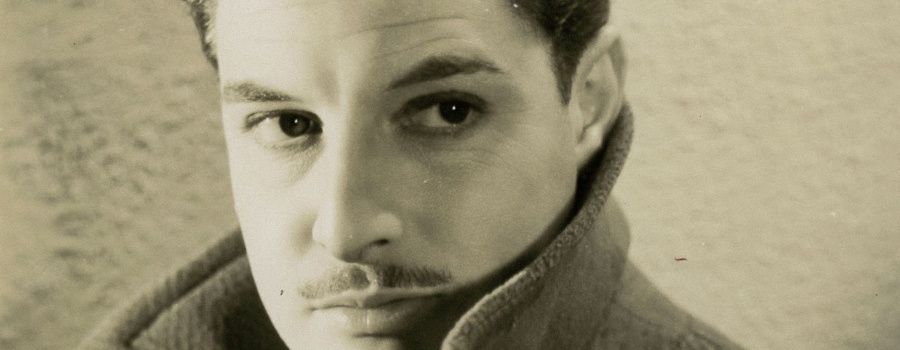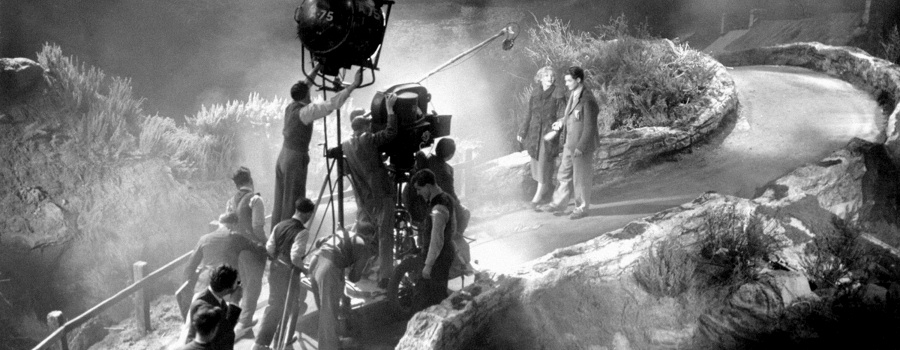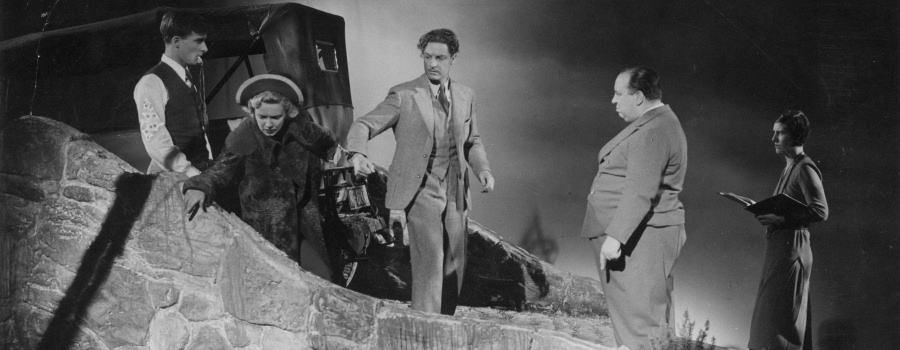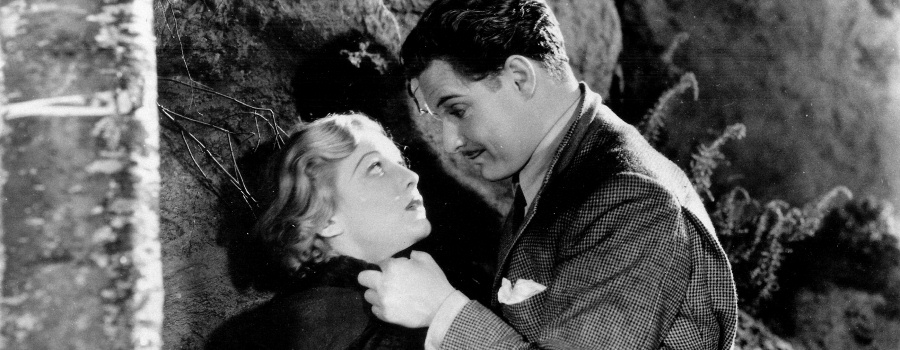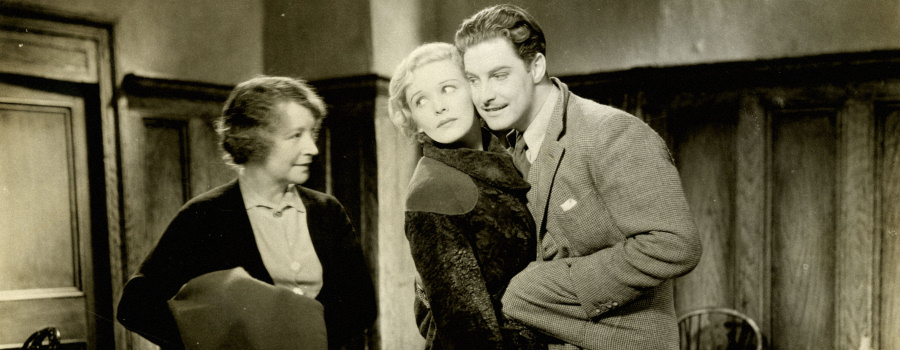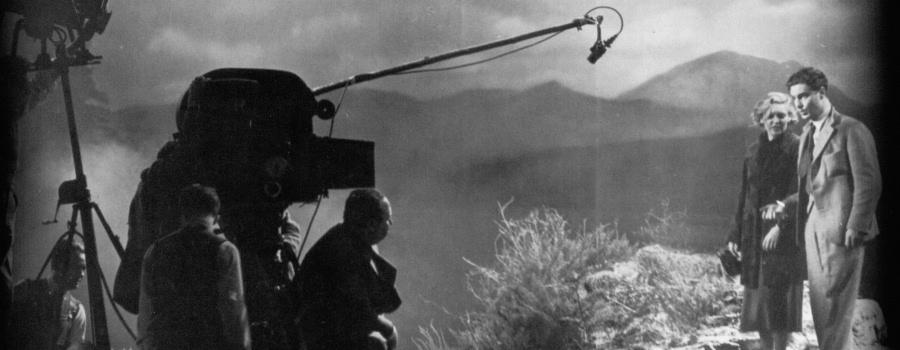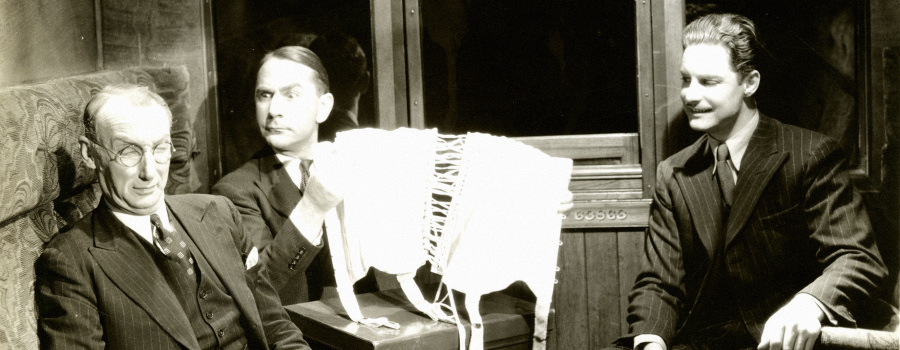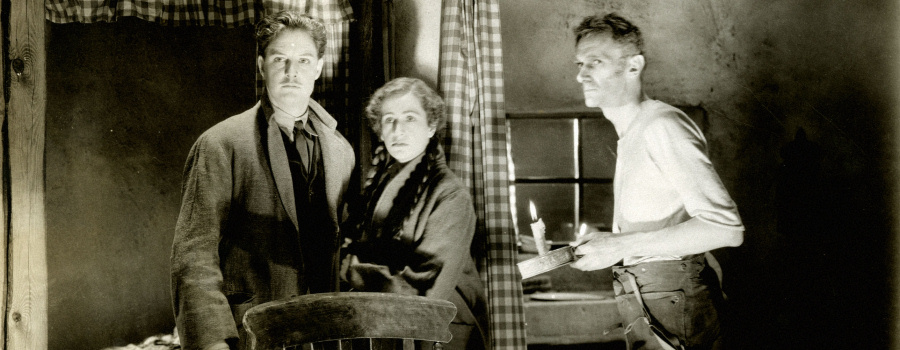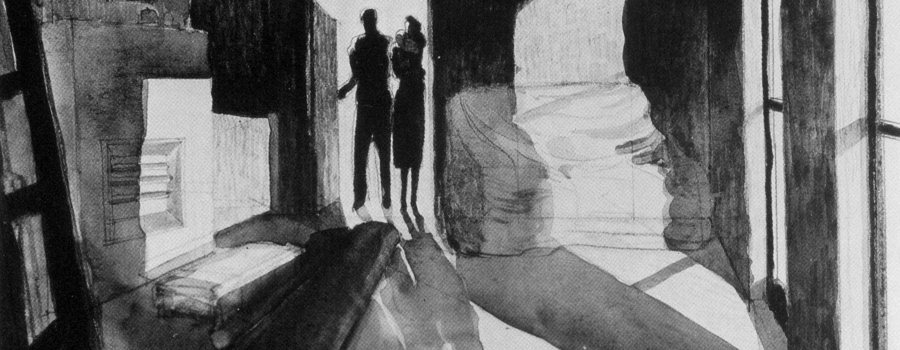The 39 Steps (1935)
| Handcuffed to the girl who double-crossed him. | |
/0002.jpg) | |
| Alfred Hitchcock | |
| Michael Balcon & Ivor Montagu | |
| Charles Bennett | |
| John Buchan | |
| Robert Donat Madeleine Carroll Lucie Mannheim Godfrey Tearle | |
| Louis Levy & Jack Beaver | |
| Bernard Knowles | |
| Derek N Twist | |
| 86 minutes | |
| black & white | |
| mono (British Acoustic Film Full Range Recording System) | |
| 1.37:1 | |
| Gaumont British Picture Corporation Limited | |
| Gaumont British Distributors (UK) | |
| Gaumont British Picture Corporation of America (USA) | |
| DVD & Blu-ray | |
Synopsis
Canadian Richard Hanney is visiting London when he meets a mysterious spy named Annabella Smith. When Smith is murdered in his apartment, Hannay is forced to go on the run from both the police and the foreign spies who killed her. Heading north to Scotland, Hannay is seemingly betrayed at every opportunity. Can he prove his innocence and expose the foreign spies before it's too late? What are "The 39 Steps" ...and, most importantly, can he rid himself of the woman he finds himself handcuffed to?
Production
In October 1934, having completed The Man Who Knew Too Much, Hitchcock and writer Charles Bennett considered adapting John Buchan's "Greenmantle" — the second Richard Hannay novel — but decided that the numerous European and Middle Eastern locales used in the book would prove too expensive to stage. Instead, they turned their attention to Buchan's first Hannay novel, "The Thirty-Nine Steps" published in 1915, which Hitchcock regarded as "a smaller subject".[1] With the source material decided, the studio purchased the screen rights from Buchan for £800.[2]
American reviewers had noted that the production values of The Man Who Knew Too Much seemed inferior to Hollywood productions, so producer Michael Balcon allowed for a higher budget of between £55,000 and £60,000, compared to the £40,000 spent on the previous film.[3]
Several sources claim that production was held up my C.M. Woolf who felt the film was "too highbrow" and tried to push Hitchcock and Bennett into developing a musical based on Floradora. When Balcon, who was away in America at the time, was contacted by Hitchcock, he immediately overruled Woolf.[4][5]
Pre-Production
Screenplay
Although Hitchcock had fond memories of first reading the book as a teenager, he soon realised they would need to take liberties with Buchan's novel:
I hadn't read the book again in the meantime. When I did so, with an eye to turning it into a film, I received a shock. I had learned a lot about filmmaking in the fifteen odd years that had elapsed. Though I could still see the reason for my first enthusiasm — the book was full of action — I found that the story as it stood was not in the least suitable for screening. So many of the scenes, which were convincing enough in print, would have looked unbelievable on the screen — as, for instance, when Hannay saw a motor car approaching; realized that he would be captured if it reached him and he were spotted; saw some stonebreakers, and in a minute or two had disguised himself as one of these workmen. Dressed up in Buchan's powerful art of description you could believe that in the book; but you wouldn't if you saw it in a picture.
— Alfred Hitchcock[6]
Hitchcock and Bennett began working on the screenplay in November 1934 and an initial incomplete draft was soon shown to Balcon who immediately saw it as "an obvious international proposition" and he encouraged Hitchcock to "avoid all phrases which are purely of importance to a British audience" in order to maximise the film's potential in America.[7]
With Balcon wanting to put the film into production in early 1935, Bennett accompanied the Hitchcocks on their annual Christmas vacation to St. Moritz where they all continued working on the script.
By the time film entered production, two elements of the script remained incomplete and were worked out during filming:
- The ending of the film was undecided and one possibility considered, which was reported in the trade press, was to have Mr. Memory reveal the location of the "39 steps" as being inside Big Ben at the Palace of Westminster.[8]
- The role of Pamela was initially a minor one but was expanded during filming and "turned out to be considerably more important at the end than we had originally intended"[6]
As with The Man Who Knew Too Much, the final screenplay was a collaborative affair, with Alma Reville, Angus MacPhail and Ivor Montagu contributing. Playwright Ian Hay provided much of the final dialogue.[9]
Casting
Michael Balcon was keen to break Gaumont-British films into the lucrative American market and the casting of actor Robert Donat as Richard Hannay was a calculated one — the actor's recent films for London Film Productions had been successfully marketed in the United States and Donat had spent 3 months in Hollywood starring in The Count of Monte Cristo (1934), produced by Edward Small. By December 1934, Variety reported that Warner Bros. had signed Donat to a US contract.[10]
The initially minor role of Pamela — a character that didn't exist in Buchan's novel — was initially given to British actress Jane Baxter.[11] However, just as filming began, Baxter was replaced by Madeleine Carroll and the role was expanded during filming. Like Donat, Carroll's profile had been rising in America and she had starred in the 1934 Fox film The World Moves On", directed by John Ford.[6]
German actress Lucie Mannheim and American-born actor Godfrey Tearle were cast as the opposing spies — Miss Annabella Smith and Professor Jordan. Appearing in only her second film, well-known stage actress Peggy Ashcroft would deliver a memorable and moving performance as the crofter's wife, trapped in an abusive relationship.
By the end of January, the principal cast were announced to the British press.[12]
Production Design
As well as Hitchcock's use of storyboards to pre-plan the camera shots, Austrian art director Oscar Friedrich Werndorff produced a large number of drawings to inform the look-and-feel of the set design. A comparison of Werndorff's drawings shows that most of them closely match the final set designs.
Locations
Although principally a studio-based production, the film included establishing footage of a number of locations in London — including Portland Place, Park Crescent, King's Cross Station and Piccadilly Circus — along with second unit footage of the Forth Bridge and wide shots of the chase across the rugged Scottish terrain around Glen Coe (which used a double standing in for Donat).
Principal Photography
Filming began at Lime Grove Studios in Shepherd's Bush on January 11th, 1935, and the initial scenes in the bawdy music hall were filmed first.[13]
On the first day that Donat and Carroll were on set together, Hitchcock famously put the pair in handcuffs, supposedly to rehearse a scene, and then claimed he'd lost the key. Whilst this incident is often reported as an example of Hitchcock's sadistic practical jokes, Donat had a very different take on the event:
On our first morning at the studio, immediately after being introduced, we were shackled in a pair of handcuffs, each have one hand imprisoned, and commenced to act a scene. Such a start was not exactly helpful in establishing relations, we thought, and these feelings were not lessened when, at the conclusion of the scene, "Hitch" lost the key of the handcuffs! For nearly an hour Madeleine and I shared this enforced companionship, while the hunt for the key was sustained. There was nothing else to do, so we talked of our mutual friends, of our ambitions, and of film matters generally. Gradually our reserve thawed as we exchange experiences. When "Hitch" saw that we were getting along famously, he extract the "missing" key from his waistcoat pocket, released us, and said, with a satisfied grin, "Now that you two know each other we can go ahead." Had it not been for Hitchcock's little ruse, Madeleine and I would probably have taken quite a time to "get together" — to the detriment of our work in the interim.[14]
As scholar Mark Glancy has noted, Hitchcock's on-set behaviour — from smashing teacups and studio lamp bulbs to calling the film's stars "Mr. Doughnut" and "The Birmingham Tart" — was designed to exert his authority and pre-eminence. It seems likely Hitchcock had witnessed German directors at Ufa and Emelka employing similar techniques in the 1920s to prick actor's egos, and to ensure cast and crew didn't become too complacent.[15]
A portion of the Forth Bridge was reconstructed on a section of railway line at Stapleford in Hertfordshire for the shot where Hannay is seen hiding behind behind a bridge pillar.[16]
During the last week of February, production moved from Lime Grove to Welwyn Studios. Whilst Lime Grove lacked a backlot, the studios at Welwyn had a standing set of a generic London street which Hitchcock was able to repurpose as the unnamed Scottish town seen in the scenes where Hannay hides in the Salvation Army parade.[17][18]
Post-Production
Release and Reception
The 39 Steps was premiered on June 6th at the New Gallery Theatre following a formal evening dinner event held at the Piccadilly Hotel. Among the attendees were John Buchan — now officially Lord Tweedsmuir and also the newly appointed Governor-General of Canada — Sir John Simon (Home Secretary), Sir Philip Cunliffe-Lister (Minister for Air) and Lord Londonderry (former Minister for Air).[19]
Gaumont-British's publicity department were concerned that the film might be perceived as a "boy's own adventure" with little to appeal to a female audience, so much of the publicity focused around Madeleine Carroll with a strong emphasis on the romance in the film and the link to John Buchan was played down. Another angle that the publicity emphasised was that the character of Pamela was a radical departure for Carroll — British audiences had grown used to the actress playing elegant but cold roles in costume dramas.[20]
Anticipating good reviews, Gaumont-British booked the filming into the 1,400 seat New Gallery for a 5 week run. Variety reported that screenings were so crowded that the police had to be called in.[21] After a highly successful run, the filmed moved to the Marble Arch Pavilion for a further 8 weeks. A further 3 weeks were spent at Dominion and Haymarket Theatres, bringing the initial West End run to 16 weeks — a record for a British film that year. By the autumn of 1935, the film had started playing in other major cities and eventually become one of the most popular films that year.[22]
Many of the British reviewers singled out Hannay's impromptu speech at the political meeting at the highlight of the film. The BFI Monthly noted the scene was "a commentary both on [Hannay's] own misfortunes and the international political situation today".[23]
The review in The Times called the film "a first rate film of adventure edged with comedy"[24]. The Manchester Guardian praised Carroll's performance in particular and, despite a few misgivings regarding the implausibilities in the story, felt that Hitchcock had produced "something that is entertainment in the best sense of the word".[25]
Overseas
An early review in the Motion Picture Daily stated that, "This has the speed, suspense and imagination in detail characteristic of a director with an American sense of box-office values and the humorous values, emphasized, nicely balance the melodrama."[26]
In Canada, the film soon became one of the highest earning British films ever, mostly due to the film's link to the country's new Governor General, John Buchan.[27]
In the US, TIME again praised the political meeting and felt the film was the "most effective demonstration to date of director Alfred Hitchcock's method of artful understatement".[28]
However, Michael Balcon's hopes that The 39 Steps would be a huge hit in America failed to come to fruition. Although the film enjoyed success in several cities, including Boston (where it opened in August 1935), New York and Minneapolis, it often lacked strong publicity and usually relied on strong local reviews and word-of-mouth. By the end of the year, The 39 Steps was placed second in the 1935 New York critics' poll of the best films of the year.[29]
Legacy
The Gaumont-British pressbook for the film contained several articles stating that Carroll had been humiliated during the scenes where Donat dragged her across the Scottish moorland sets, with her "golden hair and beautiful clothes" ruined. However, these partly fictionalised accounts were designed to emphasise to audiences that this wasn't the elegant, refined and submissive actress they had grown used to in numerous costumes dramas during the 1930s. Carroll had become increasingly frustrated at being typecast in those roles and saw The 39 Steps as a chance to successfully reinvent herself. With her character initially undeveloped at the start of filming, she worked closely with Hitchcock and Bennett to flesh out the role — borrowing from the emerging screwball comedy genre, they created a feisty and memorable "Hitchcock blonde" who was more than a match for Richard Harray.[30]
Quoted in a British newspaper shortly after filming started, Carroll said:
The part is much lighter than I usually play. In fact you might say that it is a little bit like the one Claudette Colbert played in "It Happened One Night" — though I hate making comparisons.[31]
Elements of The 39 Steps resonate throughout Hitchcock's career — the innocent man accused of a crime he didn't commit and forced to go on the run, the blonde who is more than a match for the hero, suave villains and clueless poice — particularly in subsequent films such as Young and Innocent (1937), Saboteur (1942) and North by Northwest (1959).
In 1957, following the success of his Hollywood remake of The Man Who Knew Too Much (1934), Hitchcock briefly considered a suggestion by Angus MacPhail to follow-up with a remake of The 39 Steps. However, the idea was quickly dropped when it transpired that the Rank Organisation held the story rights and were planning their own remake.[32]
In 1999, the British Film Institute announced the results of their Top 100 British Films poll and The 39 Steps ranked #4.[33]
Other Adaptations
Following the film's release, the story was adapted several times for American radio, beginning with a Lux Radio Theater adaptation in December 1937 which was based on the film. This was followed by an adaption starring Orson Welles for the Mercury Theater, this time more faithful to Buchan's novel.
In 1941, the Rank Organisation purchased Gaumont-British Picture Corporation and Gainsborough Pictures and subquently renewed their acquired ownership of the story rights. The first of two new film adaptations, released in 1959, was directed by Ralph Thomas and stuck more closely to the Hitchcock film than the source novel.
The second film, starring Robert Powell and directed by Don Sharp, was released in 1978. Whilst the plot was closer to Buchan's novel, it still borrowed several elements from Hitchcock's film, including the addition of a love interest for Hannay. The film's memorable climax at Big Ben may have been inspired by the abandoned ending originally considered by Hitchcock and Charles Bennett.[34]
More recently, in 2008 the BBC produced a feature-length drama based on Buchan's novel starring Rupert Penry-Jones. Whilst initial publicity claimed it would be faithful to the novel, the writers borrowed a number of Hitchcockian elements, including a menacing biplane attack seemingly lifted straight from North by Northwest (1959).
A highly successful semi-comic stage play, written in 2005 by Patrick Barlow and based on an earlier play by Simon Corble and Nobby Dimon, has toured widely since it's début in the London West End in August 2006.
See Also...
For further relevant information about this film, see also...
- 1000 Frames of The 39 Steps (1935)
- articles about The 39 Steps (1935)
- blog posts
- books
- complete cast and crew
- cut scenes
- filming locations
- production designs
- radio adaptations
- soundtrack albums
- trailers
- trivia
- web links to information, articles, reviews, etc
Blu-ray Releases
released in 2012

|
The 39 Steps (1935) - Criterion Collection (Blu-ray, USA, 2012) |
released in 2009

|
The 39 Steps (1935) - ITV (Blu-ray, UK, 2009) |
DVD Releases
released in 2008

|
The 39 Steps (1935) - The Times Newspaper (UK, 2008) - free DVD PAL 1.33:1 |

|
The 39 Steps (1935) - Network (UK, 2008) - part of a box set PAL 1.33:1 |
released in 2007

|
39 Stufen (1935) - AmCo Tonträger (Germany, 2007) PAL 1.33:1 |
Image Gallery
Images from the Hitchcock Gallery (click to view larger versions or search for all relevant images)...
posters
lobby cards
other images
Film Frames

Themes
- birds - "What causes pip in poultry?"
- hero falsely accused of the murder of the mysterious Miss Smith (Lucie Mannheim)
- hero on the run from both the police and the secret agents
- taboo: bondage - Hannay and Pamela handcuffed together
- the MacGuffin - what is "The 39 Steps"?
- the cultured baddie - Professor Jordan (Godfrey Tearle)
- the icy blonde - Pamela (Madeleine Carroll)
- the Hitchcock cameo - walking past Hannay and Miss Smith, tossing litter away
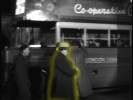
Cast and Crew
Directed by:
Starring:
- Robert Donat - Richard Hannay
- Madeleine Carroll - Pamela
- Lucie Mannheim - Miss Annabella Smith
- Godfrey Tearle - Professor Jordan
- Peggy Ashcroft - Margaret Crofter
- John Laurie - John Crofter
- Helen Haye - Mrs Louisa Jordan
- Frank Cellier - Sheriff Watson
- Wylie Watson - Mr Memory
- Gus McNaughton - Commercial Traveller on Flying Scotsman
- Jerry Verno - Commercial Traveller on Flying Scotsman
- Peggy Simpson - Maid
Produced by:
Written by:
- John Buchan - original novel ("The Thirty-nine Steps")
- Charles Bennett
Photographed by:
Edited by:
Music by:
- Jack Beaver
- Louis Levy - musical director & conductor (uncredited)
Costume Design by:
Notes & References
- ↑ The 39 Steps: A British Film Guide (2003) by Mark Glancy, page 22
- ↑ The 39 Steps: A British Film Guide (2003) by Mark Glancy, page 29
- ↑ The 39 Steps: A British Film Guide (2003) by Mark Glancy, page 28
- ↑ Alfred Hitchcock: A Life in Darkness and Light (2003) by Patrick McGilligan, chapter 6
- ↑ Hitch: The Life and Times of Alfred Hitchcock (1978) by John Russell Taylor, chapter 8
- ↑ 6.0 6.1 6.2 Film Weekly (1936) - My Screen Memories
- ↑ The 39 Steps: A British Film Guide (2003) by Mark Glancy, pages 27-28
- ↑ Don Sharp's 1978 remake did include a climax on the clock face of Big Ben.
- ↑ In later years, Charles Bennett claimed that he was responsible for most of the ideas in the film and that the others, in particular Alma, did little or nothing — "She never did a damned thing, Alma had nothing to do with The 39 Steps at all" — but these claims are easily dismissed. See The 39 Steps: A British Film Guide (2003) by Mark Glancy, pages 25-26
- ↑ Variety (18/Dec/1934)
- ↑ Jane Baxter (1909-1996) appeared in the the initial stage production of Frederick Knott's play "Dial M for Murder".
- ↑ The Times (31/Jan/1935) - New Films: "The Thirty-Nine Steps" in preparation
- ↑ The 39 Steps: A British Film Guide (2003) by Mark Glancy, page 36
- ↑ The Courier-Mail (23/Jun/1938)
- ↑ The 39 Steps: A British Film Guide (2003) by Mark Glancy, pages 37-38
- ↑ The 39 Steps: A British Film Guide (2003) by Mark Glancy, page 39
- ↑ The 39 Steps: A British Film Guide (2003) by Mark Glancy, pages 38-39
- ↑ Although not named, presumably the town is the ironically named "Killin" that appears on Miss Annabella Smith's map.
- ↑ The 39 Steps: A British Film Guide (2003) by Mark Glancy, pages 81-82
- ↑ The 39 Steps: A British Film Guide (2003) by Mark Glancy, pages 83-84
- ↑ Variety (1935) - Pictures Grosses: 'Roberta,' 45G in 2 Wks., Okay in London, But Bobbies Needed for Socko Home-Bred '39 Steps'
- ↑ The 39 Steps: A British Film Guide (2003) by Mark Glancy, pages 85-86
- ↑ BFI Monthly Film Bulletin (Jun/1935) - The 39 Steps
- ↑ The Times (06/Jun/1935) - "The Thirty-Nine Steps"
- ↑ The Manchester Guardian (08/Jun/1935) - 'Thirty-Nine Steps', John Buchan's Book Filmed
- ↑ Motion Picture Daily (24/Jun/1935) - The Thirty-Nine Steps
- ↑ The 39 Steps: A British Film Guide (2003) by Mark Glancy, pages 86-87
- ↑ TIME (23/Sep/1935) - The Thirty-Nine Steps
- ↑ The 39 Steps: A British Film Guide (2003) by Mark Glancy, pages 88-90
- ↑ The 39 Steps: A British Film Guide (2003) by Mark Glancy, pages 83-85
- ↑ Lincolnshire Echo (06/Feb/1935)
- ↑ The 39 Steps: A British Film Guide (2003) by Mark Glancy, page 100
- ↑ BBC: Best 100 British films - full list. The only other Hitchcock film to appear in the list was "The Lady Vanishes" at #35.
- ↑ Indian production company Asha Art International also released a version of "The 39 Steps" in 1978 titled "Chakravyuha".
| Hitchcock's Major Films | |
| 1920s | The Pleasure Garden · The Mountain Eagle · The Lodger · Downhill · Easy Virtue · The Ring · The Farmer's Wife · Champagne · The Manxman · Blackmail |
| 1930s | Juno and the Paycock · Murder! · The Skin Game · Rich and Strange · Number Seventeen · Waltzes from Vienna · The Man Who Knew Too Much · The 39 Steps · Secret Agent · Sabotage · Young and Innocent · The Lady Vanishes · Jamaica Inn |
| 1940s | Rebecca · Foreign Correspondent · Mr and Mrs Smith · Suspicion · Saboteur · Shadow of a Doubt · Lifeboat · Spellbound · Notorious · The Paradine Case · Rope · Under Capricorn |
| 1950s | Stage Fright · Strangers on a Train · I Confess · Dial M for Murder · Rear Window · To Catch a Thief · The Trouble with Harry · The Man Who Knew Too Much · The Wrong Man · Vertigo · North by Northwest |
| 1960s | Psycho · The Birds · Marnie · Torn Curtain · Topaz |
| 1970s | Frenzy · Family Plot |
| view full filmography | |
